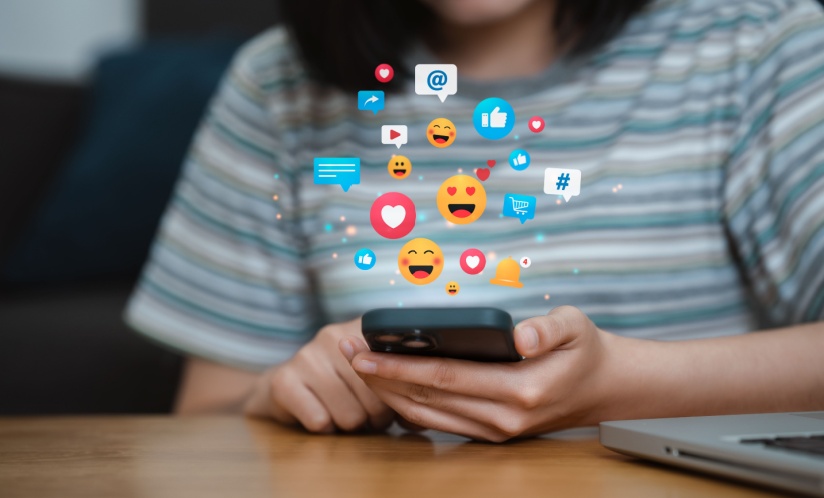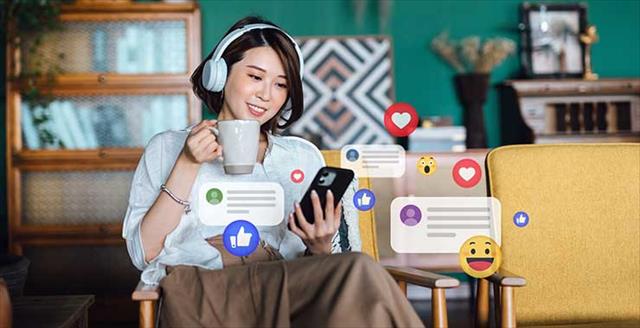
The relationship between social media use and mental health is complex, with research highlighting both positive and negative impacts depending on the nature of the content consumed. This analysis seeks to explore how satisfying social media content can influence mental well-being, particularly among adolescents.
Positive Effects of Satisfying Content

Satisfying social media content can foster positive experiences for users, particularly through community building and emotional support. Social media allows individuals to connect with like-minded peers, which can enhance feelings of belonging and reduce stigma regarding personal challenges. Positive interactions and humor shared on these platforms can also provide stress relief, especially during difficult times such as the COVID-19 pandemic, where online engagement served as a vital source of social support for many youths[5].
Moreover, studies indicate that online communities can facilitate discussions around health conditions and coping strategies, contributing to overall emotional well-being. During the pandemic, for instance, mutual friendships formed through social media were found to reduce stress levels and enhance social connections[5]. In particular, Generation Z members, who have largely grown up in a digital age, often report that connecting with others through artistic and creative expressions on social media provides emotional benefits and promotes self-esteem[3].
The Dual Nature of Social Media Content
While some social media content can be fulfilling and satisfying, the experience can be significantly different when users engage with harmful or idealized content. Research indicates that the type and quality of content are critical in determining whether social media engagement leads to positive or negative mental health outcomes. For instance, visually appealing content that reinforces positive self-esteem can enhance well-being; conversely, exposure to unrealistic standards can lead to body dissatisfaction and increased anxiety[1][5].
The Surgeon General's Advisory elaborates on these concerns, suggesting that excessive exposure to negative or harmful content—such as cyberbullying, violent material, and unrealistic body images—can outweigh the benefits of supportive online environments. As social media platforms are often structured by algorithms that prioritize engagement over user well-being, negative feelings can become amplified, contributing to depressive symptoms and poor mental health[3].
Parental and Environmental Influences

The impact of social media on adolescents is not solely dependent on the content but is also influenced by parental involvement and monitoring. Research shows that teens with strong parental relationships and active monitoring of their social media usage report significantly better mental health outcomes compared to those without such support. For example, high levels of parental monitoring can mitigate the negative effects associated with excessive social media use, highlighting the importance of a supportive home environment as a buffer against potential risks[4].
Moreover, studies suggest that youths experiencing high levels of social media use without adequate support are more prone to feelings of loneliness and depression[2][4]. This significant disparity emphasizes the necessity for parents to engage in open conversations about social media content with their children, reinforcing the distinction between fulfilling interactions and harmful exposure.
The Moderating Role of Social Media Goals
Interestingly, individual motivations for using social media can affect how content impacts mental health. A study found that teenagers motivated by social connection (approach goals) may benefit from positive social media interactions, while those driven by avoidance (fear of missing out, for instance) tend to experience more adverse psychological outcomes due to a greater focus on negative comparisons and social feedback[6]. Understanding social media goal orientation is crucial for tailoring interventions that not only reduce harmful content exposure but also encourage healthier engagement practices.
Conclusion
The effects of satisfying social media content on mental health are multifaceted, hinging on the type of content, the user's intentions, and the level of support from their immediate environment. While positive content can enhance user well-being and foster community, there remains a substantial risk that exposure to harmful material can lead to significant mental health challenges. Therefore, fostering digital literacy and encouraging meaningful, supportive interactions online are essential strategies for mitigating risks and promoting healthier social media engagement among youths. Bridging gaps in research on effective interventions also remains a priority to ensure safety and well-being in digital spaces[3][5].
As the digital landscape continues to evolve, ongoing efforts must be directed at understanding how social media content can be harnessed positively, creating pathways for youth to navigate these platforms safely and beneficially.
Get more accurate answers with Super Pandi, upload files, personalized discovery feed, save searches and contribute to the PandiPedia.
Let's look at alternatives:
- Modify the query.
- Start a new thread.
- Remove sources (if manually added).